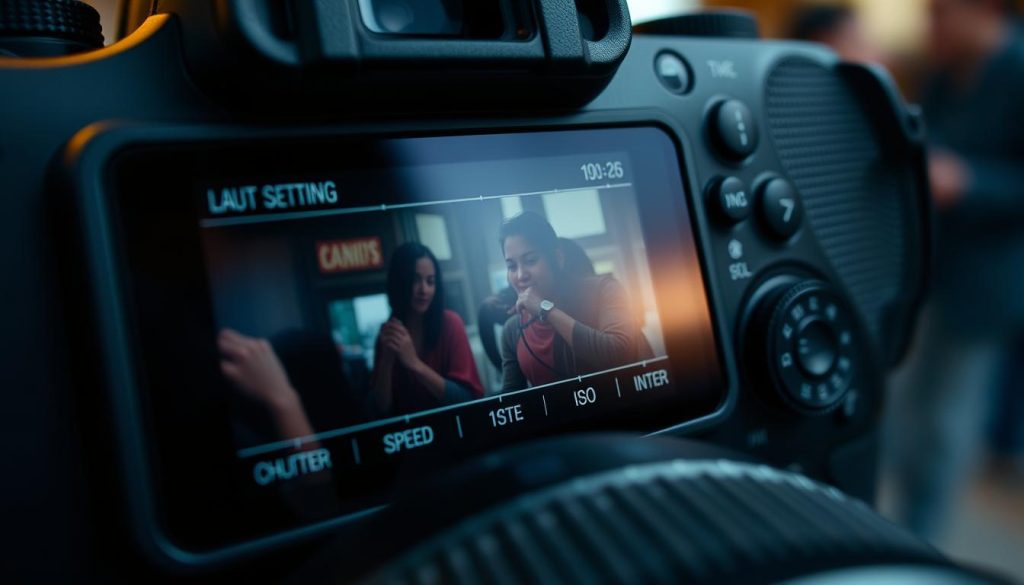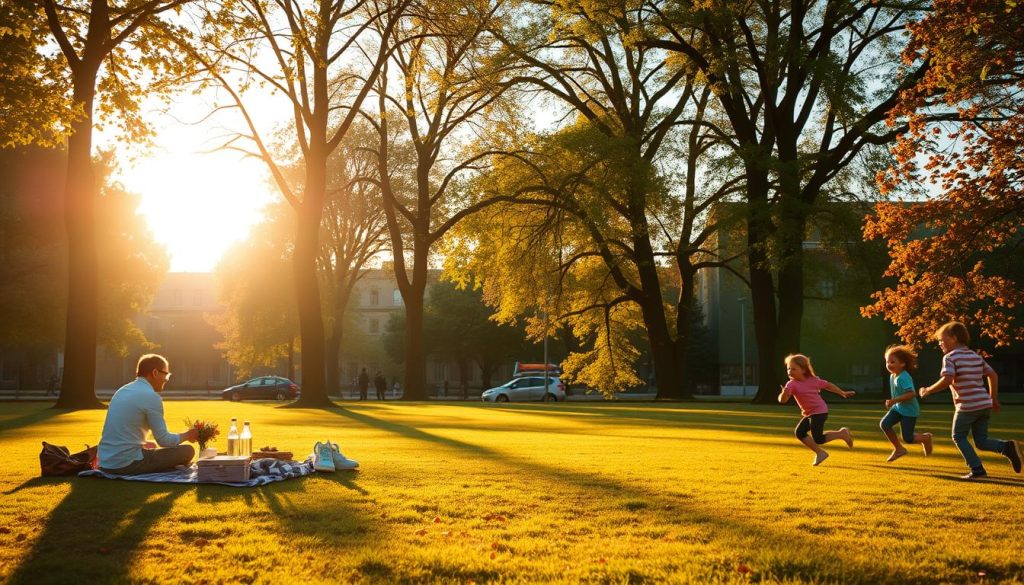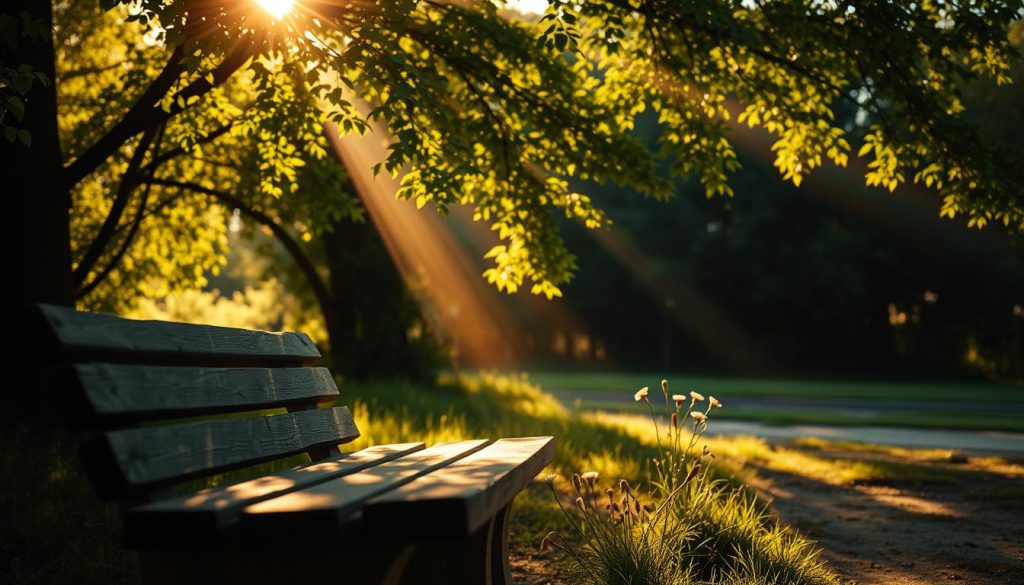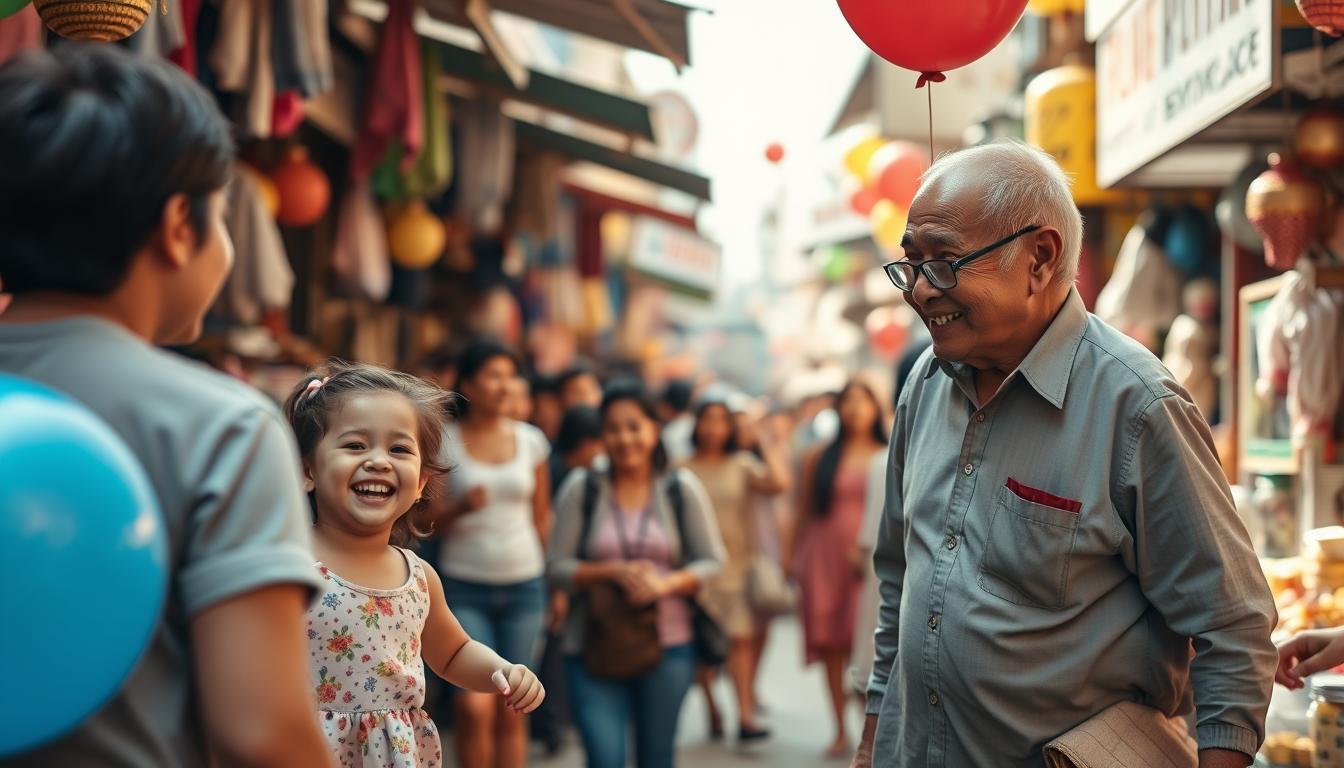I love capturing life’s raw moments. In this guide, I’ll share tips for real, emotive photos. You’ll learn to blend in, catch spontaneous moments, and show life’s beauty.
Candid photography is about connecting and revealing true emotions. I’ll show you how to see life’s beauty, use your camera, and compose shots. You’ll make photos that capture the moment perfectly.
This guide will teach you about natural light and telling stories through photos. We’ll also talk about respecting your subjects’ privacy. You’ll learn to take your candid photography to the next level.
Let’s explore candid photography together. We’ll learn to make photos that show life’s true beauty. Get ready to create lasting, meaningful images.
The Art of Observing Life’s Spontaneous Beauty
Learning to capture candid moments starts with observing the world. Train your eye to spot and catch real, unplanned moments. This way, you can show the beauty in everyday life through your photos.
How to Train Your Eye for Candid Moments
To find spontaneity, be more mindful and present. Practice observing candid moments by:
- Slowing down to really see your surroundings
- Noticing small changes in people’s expressions and actions
- Being ready to capture the unexpected
By noticing the small, quick moments, you’ll find more spontaneity in your photos.
Finding Inspiration in the Ordinary
The beauty of everyday life is often hidden in plain sight. As you become more mindful in your photography, look for inspiration in the usual. A chance meeting, a person lost in thought, or the rhythm of daily life can be inspiring. By finding inspiration in the ordinary, you’ll capture more real moments.
The art of capturing candid moments is not about perfect photos. It’s about being present and open to the world’s spontaneity. With practice, you can show the beauty of everyday life through your photos.
Capturing candid moments: Essential Camera Settings

Capturing fleeting, candid moments needs a special approach to your camera settings. As a photographer, knowing shutter speed, aperture, and ISO is key. It helps you adjust to changing light and catch spontaneous, emotive shots.
Let’s explore the main camera settings for better candid photography:
- Shutter Speed: Use a fast shutter speed to freeze action. This is vital for sharp images of moving subjects, like kids playing or street performers. Start with 1/250th of a second and adjust as needed.
- Aperture: Control the depth of field to highlight your subject. A wider aperture (lower f-number) blurs the background, making your subject pop. This is great for isolating your candid subject in a busy scene.
- ISO: Change your ISO for different light levels. In dim places, like indoor events or night scenes, raise your ISO to keep a fast shutter speed. But watch out for noise at high ISOs.
Using manual mode lets you quickly change these settings for candid shots. Anticipate movement and adjust your camera fast. This way, you can freeze the action and keep the real emotion and energy of your candid photos.
Learning these essential camera settings is crucial for great candid photography. With practice and trying new things, you’ll get better at catching life’s unscripted moments.
Mastering Composition for Candid Photography

Composition is key for capturing real, engaging candid moments. The rule of thirds is a basic technique. It helps create balanced, eye-catching frames that tell a story.
The rule of thirds divides your frame into nine parts. Use two horizontal and two vertical lines. Place your subject or key elements on these lines or in the off-center quadrants. This creates balance and interest, beyond just centering your subject.
Framing Candid Moments
Using the rule of thirds in candid photography makes your images better. It frames subjects naturally, like a documentary. This adds an authentic feel to your photos.
Off-center compositions also focus the viewer’s eye on important parts. This could be a person’s face, a meaningful interaction, or a background detail. The rule of thirds helps you create balanced compositions that guide the viewer’s gaze and tell a compelling visual story.
Exploring Asymmetrical Compositions
Don’t just stick to the rule of thirds. Try asymmetrical compositions too. Placing elements in an unbalanced way adds tension and dynamism. This is perfect for candid, spontaneous shots.
Learning composition techniques like the rule of thirds and exploring asymmetry can improve your candid photography. With practice and observation, you can make your candid shots more engaging. You’ll tell powerful visual stories that connect with your audience.
The Power of Natural Light in Candid Photography

Candid photography loves natural light. As a photographer, I’ve seen how natural light changes everything. It makes my photos soft and full of emotion.
I’ll share my best tips for using backlight, side light, window light, and the golden hour. These help create images that feel real and true.
Embracing the Beauty of Ambient Light
For candid photos, natural light is perfect. It’s softer than flash light and makes photos feel cozy. Whether it’s the golden hour or a cloudy day, using natural light is key.
Harnessing the Power of Backlighting
- Backlighting makes photos look magical, with your subject in shadow.
- Find natural backlight like windows or the sun. Place your subject in front of it.
- Play with the light’s angle and strength. Sometimes, going a bit dark makes highlights pop.
Leveraging Side Lighting and Window Light
Side and window light are great for candid photos. They create interesting shadows and highlights. This makes your photos look three-dimensional.
| Lighting Technique | Effect | When to Use |
|---|---|---|
| Backlighting | Ethereal, dramatic silhouettes | When you want to create a moody, atmospheric feel |
| Side Lighting | Striking shadows and highlights, three-dimensional quality | For capturing natural textures and contours |
| Window Light | Soft, diffused illumination, beautiful catchlights | When you want a natural, classic portrait look |
Learning to use natural light makes your photos special. They’ll be full of emotion and feel real. Remember these tips and let natural light guide your photography.
Storytelling Through Candid Portraits
Capturing candid portraits is an art form. It lets you show the true essence of your subjects. By taking non-posed shots and encouraging real self-expression, you can make images that show emotion and personality well.
One key to making great, story-driven portraits is to be in your subject’s natural setting. Don’t stick to stiff, studio-style setups. Instead, try environmental portraits that show your subjects in their own world. This makes them feel more at ease and natural, which shows in the photos.
When taking candid shots, pay attention to your subjects’ body language and facial expressions. Look for those quick, non-posed moments that show real emotion and personality. By catching these moments, you can make portraits that feel real and touch the heart.
The aim of candid portrait photography isn’t to make perfect, idealized pictures. It’s to show the true essence of your subjects. Embrace the imperfections, quirks, and energy that make each person special. This way, you can make portraits that are not just beautiful but also meaningful and insightful.
As you explore candid portrait photography, stay open-minded and try new things. Experiment with different techniques, settings, and views to find what works for you and your subjects. With practice and a sharp eye for capturing emotion, you can make portraits that tell a story and make a lasting impact.
Ethical Considerations in Candid Street Photography
As a candid photographer, you must know how to handle the ethics of capturing moments in public. It’s key to respect your subjects’ privacy and personal space. Getting their consent and building trust is vital to show respect and dignity.
Respecting Privacy and Personal Space
Street photography often means taking pictures of people without asking. This can create real, powerful images. But, you must think about your subjects’ comfort. Don’t get too close or take pictures in awkward situations. Always be ready to stop or delete if someone looks uncomfortable.
- Maintain a respectful distance from your subjects
- Be aware of your surroundings and the reactions of those around you
- Avoid photographing individuals in private or sensitive situations
Building Trust with Subjects
Getting to know your subjects can make your street photos better. Try to talk to people, tell them why you’re taking pictures, and ask if it’s okay. This not only respects their rights but also makes for more real and interesting photos.
- Introduce yourself and explain your photographic goals
- Ask for permission before taking a photograph
- Be prepared to delete images if a subject requests it
Street photography is not just about taking pictures. It’s about being careful and respectful. By doing this, you can show the world’s beauty and respect your subjects at the same time. Remember, being a good photographer means being thoughtful and considerate.
Editing and Enhancing Candid Images
Editing is the last step to make candid images stand out. I’ll show you how to enhance your photos without losing their real feel. You’ll learn to adjust colors and contrasts to tell your story better, keeping it simple and natural.
First, I pick the best photos from my shoots. I look for moments or expressions that really grab your attention. Then, I start editing, making small changes to make each photo shine.
Color grading is key in my editing. I adjust colors to match the mood of the scene. This way, I keep the photo real but make it more engaging to look at.

